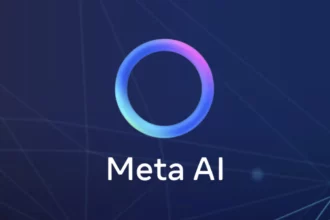Are you tired of your gradients going boom? Well, fear not, because in this blog post, we’re diving into the explosive world of the “Exploding Gradient” problem. Whether you’re a data scientist, a machine learning enthusiast, or just someone curious about the mysteries of the digital realm, this is the post for you. We’ll unravel the complexities of unstable gradients, uncover the role of activation functions, and explore the solutions to this computational conundrum. So, buckle up and get ready to blast off into the fascinating world of exploding gradients!
Table of Contents
ToggleUnderstanding the Exploding Gradient Problem
Imagine embarking on a treacherous mountain climb, where each step upward is met with the risk of an avalanche that could send you tumbling down. This is akin to the plight faced in the neural network landscape known as the exploding gradient problem. It’s a scenario where the neural network’s initial weights act as a precarious footing, setting off large losses. These losses, in turn, generate colossal gradient values that coalesce, disrupting the network’s ascent towards optimal performance.
The crux of the issue lies in the network’s learning mechanism. During training, gradients are akin to compasses that guide the weight adjustments in the network. Ideally, these adjustments should be subtle and precise, nudging the network towards the coveted global minima—the lowest point in the loss landscape where the most accurate predictions are made. However, when gradients explode, they cause the weight updates to be so erratic that the network overshoots the minima, akin to a spacecraft missing its moon landing by miles.
This problematic occurrence stirs up instability, preventing the network from learning efficiently. The repercussions are akin to a chain reaction, where each misstep amplifies the next, causing the network’s performance to become erratic and, at times, completely unmanageable.
To contextualize this phenomenon, here is a succinct summary:
| Problem | Consequence | Outcome |
|---|---|---|
| Exploding Gradients | Large parameter updates | Oscillations, missing global minima |
| Large Initial Weights | Large Losses | Accumulation of big gradient values |
| Unstable Network | Erratic performance | Inefficiency in learning |
Understanding the exploding gradient problem is crucial for those delving into the world of deep learning. It stands as a testament to the delicate balance required in neural network training—a balance that ensures each step taken is measured and does not precipitate a detrimental cascade of mistakes. As we proceed, we will further explore how this issue can be mitigated, ensuring that the journey towards a well-trained neural network is both stable and successful.
Exploding Gradients: The Role of Activation Functions
In the intricate dance of neural network training, activation functions play a pivotal role, shaping the output of neurons to introduce the non-linear complexities that enable deep learning models to capture and represent a vast array of patterns. However, these very functions are often misunderstood, accused prematurely of causing the dreaded exploding gradients phenomenon.
Picture an eager learner, absorbing knowledge at an exponential rate. Now imagine if this learning spiraled out of control, with each piece of information amplifying until it overwhelmed the learner’s ability to make sense of it all. This is akin to what happens during an exploding gradient situation: the network’s learning process becomes counterproductive, as the calculated gradients used to optimize the network’s weights during backpropagation grow exponentially large, leading to erratic and unstable training iterations.
It’s a common misconception that the sigmoid activation function, with its graceful S-shaped curve, is the villain in this narrative. Critics argue that it is prone to unleashing an explosion of gradient values. However, upon closer examination, we find that the true culprits lurking in the shadows are the neural network weights. These weights, when combined inappropriately during training, can multiply to produce values that balloon out of control.
The gradient linked to each weight is the product of many numbers during backpropagation. If this product consistently yields values greater than one, the stage is set for potential disaster. The gradients swell, growing exponentially with each layer they traverse backwards through the network, leading to the phenomenon we term exploding gradients.
We’ve identified the problem, but what of the sigmoid function? It’s true that when used in the hidden layers across deep networks, it can exacerbate the issue due to its tendency to saturate, leading to gradients that either vanish or explode. However, this doesn’t mean we should cast it away entirely. Used judiciously, such as in the final layer for binary classification tasks, it can still perform its role effectively, particularly when paired with the softmax function for multi-class scenarios.
To navigate away from the precipice of gradient explosion, one solution stands out: the Rectified Linear Unit (ReLU). ReLU has become the go-to activation function for many practitioners. It’s quite simple in its formulation—providing a linear, positive output for positive inputs, and zero otherwise. This simplicity translates to a lower risk of producing gradients that grow out of control, offering a steadier path forward for the neural network to learn.
Even with ReLU’s popularity, it’s important to recognize that no one solution is a panacea. The architecture of the network, the initialization of weights, and the careful calibration of the learning process all play integral roles in preventing the explosion of gradients. As we delve into the next sections, we’ll explore other strategies and innovations that help keep the gradients in check, ensuring that our neural networks remain stable, reliable, and ready to learn from the complex data they’re designed to interpret.
Unstable Gradients: A Double-Edged Sword
Imagine embarking on a treacherous mountain hike, where each step could either propel you towards the peak or send you tumbling into an abyss. This is akin to the perils faced by neural networks due to the unstable gradient problem. Gradients in the embryonic layers of a neural network are like the hiker’s footholds, crucial for the ascent towards optimal performance. However, these gradients can be as unpredictable as the mountain weather, sometimes swelling to massive proportions, or fading into nothingness.
On one side, we have the vanishing gradient problem, a silent saboteur of progress. It sneaks in when gradients become infinitesimally small, effectively paralyzing the network’s ability to learn. This occurs as the gradient is backpropagated through numerous layers and multiplied by weights, diminishing it to the point where it cannot contribute to meaningful weight updates. The network’s learning stalls, trapped in a plateau of ineffectuality.
Flip the coin, and you encounter the exploding gradient problem. Here, the gradients grow exponentially, becoming behemoths that wreak havoc on the network’s stability. Large gradients lead to disproportionately large updates in the network’s parameters, causing the learning process to oscillate wildly. Instead of converging to a solution, the model’s performance becomes erratic, like a ship caught in a storm, unable to navigate towards the desired destination.
Both these issues stem from the same source – the delicate balance of gradient flow through the network’s architecture. The exploding gradients can be particularly disruptive, as they can emerge suddenly during training, making it imperative for practitioners to vigilantly monitor and adjust the learning process. The consequences of not doing so can be dire, with models failing to converge or, even worse, converging to suboptimal solutions that are deceptive mirages of success.
While the sigmoid activation function has been cleared of being the sole perpetrator behind exploding gradients, it remains a factor that can exacerbate the issue under certain conditions. The good news is that with the advent of functions like the Rectified Linear Unit (ReLU), the risk of gradients reaching critical mass is reduced. Nevertheless, these activation functions are not panaceas, and the overall network design, including weight initialization and learning rate settings, must be carefully calibrated to navigate the treacherous terrain of neural network training.
In the next section, we will explore the various strategies and safeguards that can be implemented to mitigate the risk of exploding gradients, ensuring that the neural network’s journey towards learning and adaptation is as smooth and stable as possible.
Solving the Exploding Gradient Problem
The journey through the treacherous terrain of neural network training is fraught with perils, one of which is the notorious exploding gradient problem. As we’ve seen, this phenomenon can catapult a model’s learning process into chaos, with values escalating to astronomical levels and derailing the entire convergence process. However, fear not, for there are seasoned navigators in the realm of deep learning who have charted paths to bypass this obstacle.
A prevalent tactic in this arsenal is the art of gradient clipping. Picture a climber tethering themselves to avoid a perilous ascent; similarly, gradient clipping anchors the error derivative within a predefined range. By doing so, it ensures that the gradients remain within manageable bounds, thus preventing them from ballooning to unwieldy proportions. This technique is straightforward yet potent, serving as a guardrail to keep the network’s learning journey on track.
Another strategy involves a careful selection of the initial weights, setting the stage for stability. The initialization of weights can be likened to the foundation of a building; if the cornerstone is set correctly, the structure is more likely to withstand the forces of nature. By choosing initial weights that are neither too small to fade into oblivion nor too large to cause an uproar, one can steer clear of the explosive gradient dilemma.
Moreover, the utilization of certain activation functions can mitigate the risk of gradients reaching critical mass. Functions like ReLU (Rectified Linear Unit) have become the protagonists in this narrative, offering a simple yet effective solution to keep the gradients in a healthy range. However, they are not the panacea and must be complemented with other strategies for a robust defense against this issue.
It’s imperative to remember that the quest for stability in neural network training is ongoing. As we delve further into this topic, we’ll explore additional complexities and solutions, such as the shattered gradients problem and the innovative architecture of Residual Networks (ResNets), which offer new avenues to fortify our models against the caprices of gradient instability.
Each solution is a thread in the intricate tapestry of neural network optimization, woven together to create a resilient fabric that can withstand the pressures of training and emerge robust and reliable. So, let us continue our journey, armed with the knowledge to tame the explosive nature of gradients and steer our neural networks towards the pinnacle of their learning capabilities.
The Shattered Gradients Problem
Imagine a seasoned artist attempting to paint a masterpiece, but with each brushstroke, the colors turn to an indiscriminate shade of gray. This is akin to the predicament faced by neural networks due to the shattered gradients problem. As the depth of a neural network increases, akin to adding more layers to a canvas, the gradients—those vital cues that guide the network’s learning—start to resemble a chaotic pattern akin to white noise.
This issue is not just a minor inconvenience; it is a fundamental challenge that can cripple the learning process of deep networks. The gradients, which are supposed to provide a clear path for the network’s adjustments, become so disjointed that they fail to convey meaningful information about the direction in which the network should evolve. This leads to a lack of coherent learning direction, much like our artist struggling to discern the true colors needed for their painting.
To truly grasp the significance of the shattered gradients problem, let’s delve into the mechanics of neural networks. During backpropagation, gradients are computed to update the weights, with the aim of minimizing the loss function. However, with each additional layer, these gradients are subjected to numerous transformations and can become distorted to the point where they no longer represent useful information. This is particularly troublesome in standard feedforward networks, where depth is supposed to be an ally, enhancing the network’s ability to capture complex patterns and relationships.
While the exploding gradient problem is like a deafening roar that drowns out the learning process, and the vanishing gradient problem is akin to a whisper too faint to be heard, shattered gradients are the cacophony of a learning process in disarray. Each of these issues can severely hamper the network’s ability to learn, but it is the shattered gradients that present a uniquely perplexing challenge by rendering the gradient signal virtually uninterpretable.
Fortunately, the bleak landscape of shattered gradients is not without its beacon of hope. The advent of Residual Networks (ResNets), which will be discussed in the upcoming section, has provided a revolutionary approach to mitigate this problem. By incorporating skip connections that allow gradients to flow through the network more freely, ResNets have shown a remarkable ability to reduce the tendency of gradients to shatter, thus preserving the integrity of the learning signal even in very deep networks.
Understanding the shattered gradients problem is crucial for anyone venturing into the realm of deep learning. It is a reminder that as we strive to push the boundaries of neural network complexity, we must also innovate solutions to ensure that our models learn with clarity and purpose.
In the next section, we will explore how ResNets not only offer a lifeline to neural networks suffering from shattered gradients but also represent a paradigm shift in how we construct and train deep learning models to overcome the limitations of their predecessors.
Resnets: A Solution to Shattered Gradients
Imagine a mountaineer attempting to scale an unforgiving peak. Each step upward is met with treacherous ice that threatens to send them sliding back down. In the realm of deep learning, the shattered gradients problem presents a similar challenge to neural networks as they ascend the summit of complexity. But there’s a beacon of hope shining in this precipitous landscape: Residual Networks (ResNets).
ResNets, like a series of well-placed ladders on our metaphorical mountain, offer a direct pathway for gradients to traverse the network’s depth. These innovative architectures incorporate skip connections—shortcuts that bypass one or more layers. By doing so, they allow gradients to flow backward through the network without the risk of being diluted or amplified excessively. This architectural marvel prevents the gradients from descending into chaos, ensuring that even the deepest of networks can learn effectively.
The effectiveness of ResNets lies in their simplicity. Rather than rethinking the entire structure of neural networks, they introduce a straightforward yet powerful concept: the addition of the input to the output of a layer block. This helps in preserving the identity of the input, which in turn provides a clear signal for the gradients during backpropagation. It’s a subtle tweak with monumental implications, akin to finding a formula that ensures every handhold and foothold on a climb will support the mountaineer’s ascent without fail.
As a result of this design, ResNets have swiftly become a gold standard in the construction of deep neural networks. They have shown remarkable success in a variety of demanding tasks, from image recognition to playing complex games, proving that the shattered gradients problem can indeed be overcome. Moreover, their influence has sparked a wave of innovation, inspiring new architectures that emulate their residual learning approach.
What makes ResNets particularly attractive is their versatility. They have been successfully implemented in various network depths and complexities, showing consistent improvements in learning stability. Their ability to maintain gradient integrity deep within the network’s layers ensures that they remain a staple in the toolkit of machine learning practitioners and researchers alike.
By unshackling the potential of deep learning models, ResNets have not only provided a solution to the shattered gradients problem but have also paved the way towards more intricate and capable neural networks. They stand as a testament to the power of clever engineering and innovation in overcoming the hurdles that once seemed insurmountable in the quest for artificial intelligence that can learn as efficiently and effectively as humans do.
As we delve further into the intricate tapestry of neural network design, the next section will tie together the threads of our discussion, leading us to a comprehensive conclusion that encapsulates the importance of understanding and addressing the challenges posed by exploding gradients.
Conclusion
In the intricate tapestry of deep learning, the threads of exploding gradients, vanishing gradients, and shattered gradients form a challenging pattern, one that can unravel the potential of even the most sophisticated neural networks. Yet, as with any great puzzle, the key lies in understanding its pieces. Our journey through the labyrinth of gradient problems has been both enlightening and necessary. It has armed us with the wisdom to craft solutions that can navigate these complexities, ensuring that the path towards efficient neural network learning remains clear.
Think of the ResNets as the ingenious architects of deep learning, constructing bridges over the chasms of shattered gradients. These structural marvels, with their skip connections, have emerged as champions in the battle against this phenomenon, allowing uninterrupted flows of learning through the depths of neural layers. In doing so, they have not only solved a critical problem but have also set a precedent for innovative thinking within the AI community. The success story of ResNets underscores a fundamental truth in technological advancements: every challenge conceals an opportunity for innovation.
As we continue to push the boundaries of what’s possible, the lessons gleaned from addressing these gradient-related issues will undoubtedly influence the future design of neural networks. The pursuit of stable and robust learning algorithms is far from over, but with each stride, we come closer to mastering the delicate balance required to harness the true power of deep learning. Let us then, with this knowledge in hand, press forward in our quest, ever vigilant for new solutions that will carry us beyond the horizons of today’s understanding.
Remember, in the world of artificial intelligence, every problem is a stepping stone to greater heights. The issues of exploding gradients may seem daunting, but they are merely the shadows cast by the light of progress, urging us to find paths that lead to brighter, more informed futures. With ongoing research and relentless curiosity, we will continue to evolve our methods, refine our models, and pave the way for an era of AI that is as reliable as it is revolutionary.
Q: What is the exploding gradient?
A: The exploding gradient refers to a problem in neural network training where large error gradients accumulate and result in very large updates to the model weights.
Q: What happens when gradients explode?
A: When gradients explode, the multiplication of these gradients becomes huge over time. This leads to the model being unable to learn and its behavior becomes unstable.
Q: Why do gradients explode?
A: Gradients can explode when the derivatives in a network of hidden layers are large. As these derivatives are multiplied together during propagation, the gradient increases exponentially until it eventually explodes.
Q: Why are exploding gradients bad?
A: Exploding gradients are problematic because they can cause large parameter updates and make gradient descents oscillate without converging to global minima. This hinders the learning process of the neural network.




